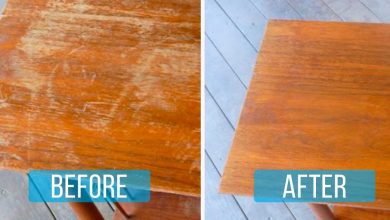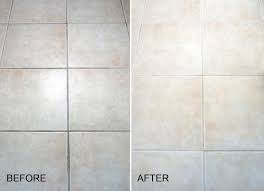But it soon became an amazing outlet for me, spending late nights watching YouTube videos and learning how to sew. My life was a crazy mama mess, but being able to start and finish a project in the evenings gave me a creative and encouraging outlet.
ME: Do you have a dedicated sewing room, or is it a multi-functional space?
STACIE: This question makes me laugh as it comes up in conversation around our house probably monthly. We live in a small bungalow built in 1908 here in Denver. When someone mentions the word bungalow first you think a cute brick home, but you should also be thinking smallest bedrooms and closets you’ve ever experienced. LOL!Our house is a four bedroom two bath and if you do the math we have three kids and one bedroom is solely my sewing space. I’ve justify this room for many years and I don’t know how much longer I can justify having my own sewing space, but I plan to use this room as long as possible. My husband uses the closet, but the room is mine.
ME: How has this space changed over time?
STACIE: The room has changed a lot since first buying the home. It was dark green and I painted it white soon after moving in. It’s quite small, so I am intentional about what I need and don’t need in there. Most importantly, I try to make this room functional for my business, including having all of my materials and fabrics needed for the Platt Park Hoodies accessible.
ME: Let’s start with your desk and pegboard, since that’s what first caught my eye on Instagram. Tell me about your sewing machine desk.
STACE: The desk drawers are from IKEA and the desktop is repurposed from my old desk, which my father made.
ME: I love the pegboard above your sewing desk! I’ve notice from your Instagram photos that how your sewing pegboard accessories and how you organize the pegboard has changed over time. Tell me what’s there now, and how your decide what to keep here.
STACIE: The pegboard is a phenomenal idea that I found on Pinterest. It’s extremely practical and I love that I can switch it up and change it around. Overtime, my materials and needs change based on the business, so the practicality is so helpful.
Recently, I found myself needing tissue paper, ribbon, tape, bags, and string, as well as business cards when I’m finalizing each product, so I switched up the pegboard so that I have everything within arms reach.
On the sewing side I have on my scissors, rotary cutters, and rulers, among other things. The Platt Park Hoodie comes in lots of different colors, so I need to have all my thread organizer here, as well. I also have a hanging file organizer to try and stay organized with paperwork.
ME: Did you DIY leather strap hanging shelf on your pegboard?
ME: Tell me about the shelves you use to organize your fabric stash. How did you decide to use the cinder blocks?
STACIE: The fabric storage idea, as you probably already guessed, is from Pinterest. I needed something that was not too deep because the room is so small, and I also did not need that much room depth wise to store the fabric.
I went to Home Depot and got a bunch of cinder blocks and some wood (I recommend securing the wood shelves to the wall with an L bracket). I love that it gets the shelves off the ground. I think that when you’re designing a room, lifting things off the ground gives the effect of the room being bigger.
ME: What is your fabric on the bookshelves wrapped around?
STACIE: I got this fabric storage idea from my girlfriend’s YouTube tutorial. She wrapped her fabric around comic book boards, but I just ended up using Styrofoam boards from the dollar store (the ones you use for school projects!). I cut them into four equal squares, folding and wrapping my cotton fabrics around. It’s organized and practical!
Wrapping fabric around comic book boards or Styrofoam boards is a great solution because it allows the fabric to be filed vertically, providing more storage space while keeping all the colors and patterns on display, just like at a fabric store.
ME: What do you keep in the black and white baskets below your fabric shelves?
STACIE: I love these baskets! The baskets hold more of my knit/apparel fabrics like flannel, mink, rayon, etc. These fabrics don’t show wrinkles as much as cotton so that is why I can simply toss them in the baskets. These black and white baskets are from Daiso, a store that I often go to when I am visiting California. You can find similar black and white fabric baskets on Amazon, like these, these, and these.
ME: What is your favorite thing about your sewing space?
STACIE: My favorite thing about my sewing space is how it is organized, with everything having a home. For example, this is how I now store the thread for my hoodies in the openings of the cinder blocks.
In this sewing room, no space goes unused… even the back of the door is used to store Stacie’s ironing board.
ME: Tell me about the other tall storage cabinet in your sewing room. What do you keep in there?
STACIE: I happened to get this tall cabinet in the “as is section” of IKEA. This is where I store the fabric for the lining of the hoodies in bins. I also wanted a cabinet with door so that not everything was on display! I needed a place that I can put things and still look clean to the eye. I do have a vision of an antique mod hutch here someday but this space is super narrow so I’m still on the hunt!
ME: I love your little shelf with the clothing rod and black and white stripes below it. Tell me about this space. Do you use it as a backdrop for photos?
STACIE: The vision for the spot was a backdrop to take my photos. I bought these large, patterned poster boards thinking it would be fun to have different backgrounds for pictures. I hole punched the top corners of the poster board and placed two nails just under the shelf to hold up the poster boards.
ME: It looks like the clothing rod is hung with leather loops. Was this another DIY? If so, how did you attach the leather loops to the shelf?
STACIE: Everything around my room is very DIY. My husband hung the industrial shelf for me with the raw wood and brackets. I loved having a place for knickknacks but needed a place to hang my finished products and patterns. I loved how the leather straps were working on on my peg board so I tried to incorporate the same look. I made the loops out of the leather {approximately 1” W x 5” L} and screwed the ends underneath the wood shelf. I had an extra piece of PVC pipe in the garage and I cut it down to be the length of the shelf and slid it in the loops of the leather straps.
ME: I know you’ve been working on creating your new heavy duty patterns pieces. Can you tell me more about that and give us your best tips for how to organize and store sewing patterns?
STACIE: Yes! Previously all of my kid sized patterns were organized in size order and stored in Ziplock bags that hung on the wall next to my pegboard with a simple nail. My adult size patterns were on dotted pattern paper and I kept the sizes together with binder clips.
Recently, I’ve been working on transferring all of my paper patterns over to a new system using special manila pattern paper that is thick and sturdy quality. The reason why you want your pattern pieces on this thick sturdy paper is because you will jeopardize the shape of you pattern pieces as you use, cutting and tracing over and over.
Transferring my pattern pieces to this manila pattern paper has been a very long process. It is approximately a 4-step process per piece. My hoodies have 8 pattern pieces each, and I have 12 different sizes. Eight pieces times twelves sizes is 96 pieces, times 4 for the 4-step process is 384…whew! That makes my new pattern pieces hanging from the DIY hanging rod as precious as gold!
The new pattern pieces on the manila pattern paper hang from the rod from metal durable pattern hooks. I bought all of my products locally at a sewing work space call Denver Design Incubator (DDI). I first bought my products here because I never used them before and was worried about ordering online, but now that I have used these products I feel confident purchasing them online going forward.
You can watch Stacie’s two-part Instagram video where she explains more about her new, more durable patterns and how she is organizing and storing them. She also recommends this website as a great resource for learning more about the pattern creation process.
Stacie admits that her other patterns (the ones she uses to sew for herself and her kids, rather than for her business) used to be “an exploding mess” before she organized them using manila envelopes. She tapes pictures on the outside and tucks all the loose pattern pieces safely inside, pinned closed.
She has transferred the pattern envelopes from the metal crate to this simple wood box next to her sewing desk, but thanks to the photos on the front, she can still simply flip through to quickly find what she’s looking for.
Thank you so much, Stacie, for sharing all of your budget friendly, space-saving, sewing room organization ideas with us! Your pegboard had me at hello, but it’s your rainbow ordered thread and fabric organization that really make heart go pitter patter!
More about the Platt Park Hoodie (and why you might want one, or three)…
Stacie has been making Platt Park Hoodies since 2016 and they are as adorable as they are comfortable and practical.
As a mom of three, Stacie’s goal was to create a design that was durable and long lasting, and the Platt Park Hoodie fits the bill perfectly. They are made from Polartec fabric, which is lightweight material that wicks away moisture, and is soft, elastic, breathable, UV protective, odor and stain resistant, and machine washable. What more could you ask for right?! As Stacie puts it, “This fabric just screams mom’s choice!” You can fold up to fit in your purse, backpack, or diaper bag where it takes up almost no space, and it comes out with no wrinkles. It’s the perfect layering piece for all seasons.
The Platt Park Hoodie started as a kids-only line, but fortunately for me, she now offers adult sizes as well. You can order online, choosing from Stacie’s recommended fabric pairings, or you can customize your own by choosing your favorite shell color and lining.It probably comes as no surprise that I picked a navy blue shell for my Platt Park Hoodie! For the lining, I chose fun floral with some teal and pink. I love that my hoodie is soft, comfy and warm, but it’s also so much more stylish than any other hoodie I own. It’s my go to for morning soccer games, weekends in the mountains, and running errands. It’s perfect with jeans, but I’ve also been dressing it up a bit this spring with my new favorite pink pants.
















